
Pickleball Techniques and Strategies: from Beginner to Champion
From Beginner to Pro: Ace your Play with our Pickleball Techniques & Strategies to Dominate the Court in your Next Game.
From the entirety of racket sports, we find ourselves drawn to the fascinating world of Pickleball Singles. Pickleball has undoubtedly emerged as a unique and engaging option, whether indoors or outdoors. With its origins rooted in simplicity, this sport has evolved and captured the hearts of many players.
Just as the great Arthur Ashe once said, “Success is a journey, not a destination.” Regardless of whether you are an experienced player or a curious beginner, this blog aims not only to guide you through the basic rules of Pickleball Singles but also to offer insightful tips to equip you with the knowledge to become a confident player.
So, let’s jump right in, pickle our brains together, and serve up a smashing good time!
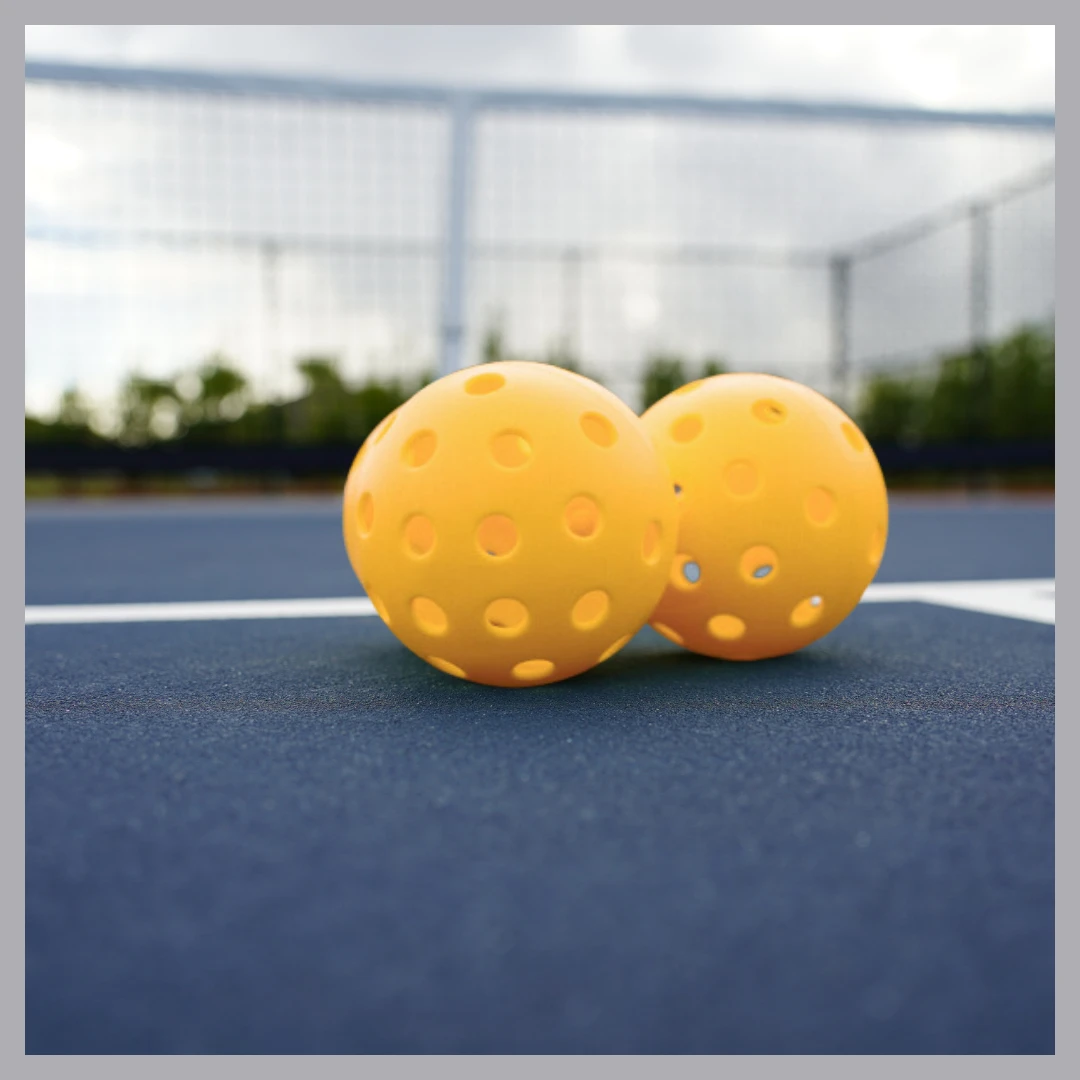
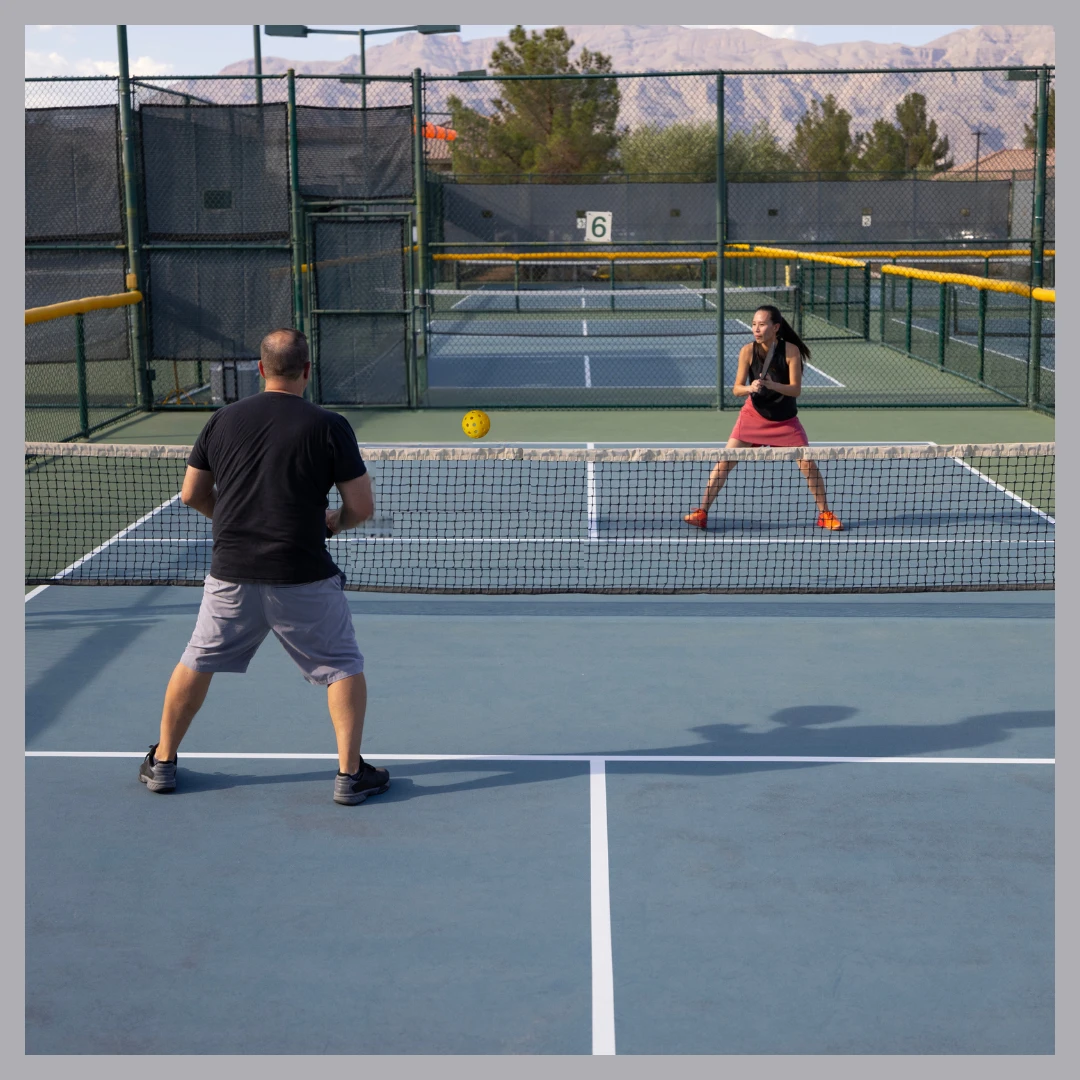
Stepping onto the court, Pickleball singles is a one-on-one rendition of this game. This involves two players competing against each other on a court that is 20 by 44 feet court.
The court is divided into specific zones with a Non-Volley Zone, also known as “The Kitchen,” positioned near the net. The main goal is to outsmart your opponent’s score by making accurate shots beyond your rival’s reach. In general, players announce two numbers during the game: “The server’s” score and “the receiver’s score.”
In Pickleball singles, players serve diagonally using an underhand motion similar to Tennis. Likewise, the serve must clear the Non-Volley zone, and points are only scored by the serving side. Once the ball is in play, players take turns hitting it back and forth to keep its position within the playing surface.
Moreover, the court dimension remains the same for doubles play to ensure consistency across different game adaptations. However, the key fundamentals lie in the serving and receiving aspects.
1. The Serve Rules
a. Both feet must be positioned behind the baseline, and you can’t jump in the air to serve.
b. The server must serve underhand.
c. Players can perform a drop serve but cannot throw it downward to increase the bounce.
d. You must hit the ball diagonally across the net and ensure it lands past the kitchen line during the serve.
2. The Two Bounce Rule
a. Each player must let the ball bounce once on their side before hitting it out of the air.
b. After the ball has bounced once on each side, you can now legally hit the ball out of the air as long as you are behind the kitchen line.
3. The Non-Volley Zone – This is also known as “The Kitchen.”
a. When it comes to the Non-Volley zone, the rule still reinforces that players must stay behind this zone during the serve.
b. Players must refrain from striking the ball while in mid-air within the kitchen area.
c. If you strike a ball out of the air and your motion carries you into the kitchen, even if the point has concluded, it will result in a fault.
d. Once the ball is served, both the server and receiver are allowed to step into the Non-Volley zone.
e. If the ball bounces into the kitchen, you can step into that area without waiting for the bounce.
d. After stepping in to get the ball, make sure to get out of the kitchen and re-establish both feet behind the kitchen line immediately so that you can hit the ball out of the air legally.
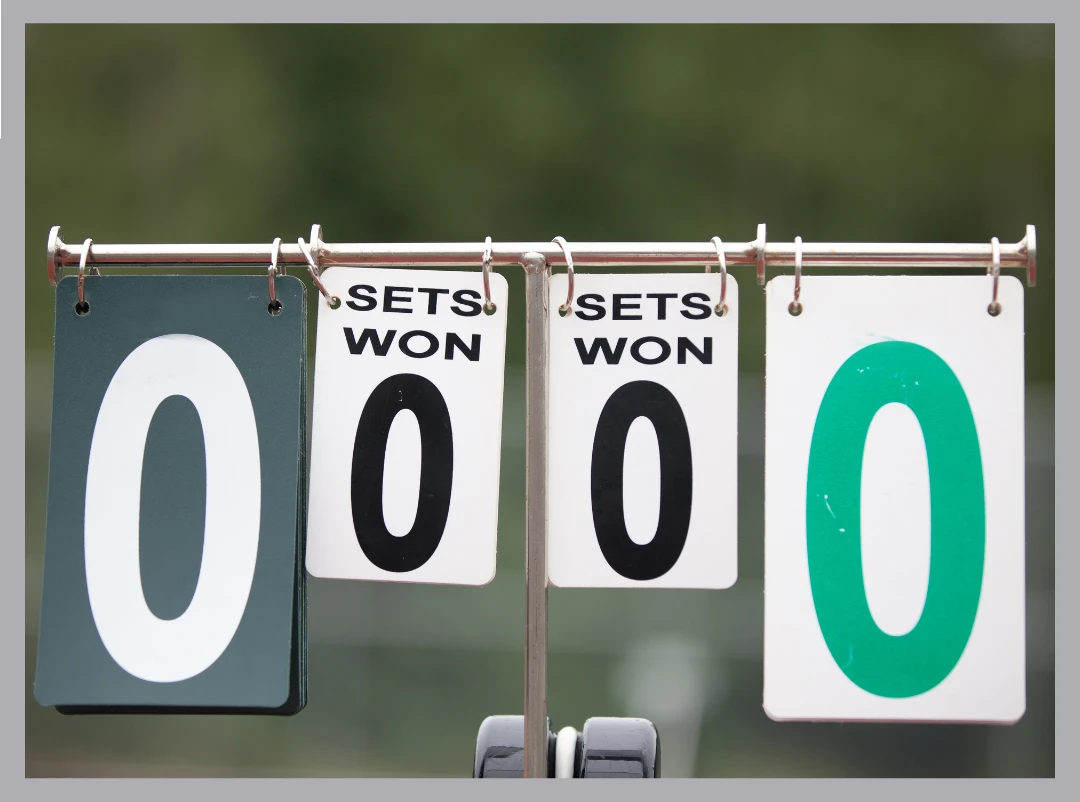 If the receiver commits a fault, the server earns the point. Conversely, if the server makes a fault, they lose the serve. The serving side gains points through the opponent’s faults, such as hitting the ball out of lines or into the net. Generally, games are played to 11 points, with a 2-point advantage to win. Each player serves once until they lose a rally, at which point the serve shifts to the opponent. This rotation continues until the game is over.
If the receiver commits a fault, the server earns the point. Conversely, if the server makes a fault, they lose the serve. The serving side gains points through the opponent’s faults, such as hitting the ball out of lines or into the net. Generally, games are played to 11 points, with a 2-point advantage to win. Each player serves once until they lose a rally, at which point the serve shifts to the opponent. This rotation continues until the game is over.
If a player, player’s clothing, or paddle touches the net while the ball is in play, it is a fault. Further, it is considered a fault if the ball hits a player or player’s clothing. Finally, faults can occur if the ball hits the ceiling, wall, or any other permanent object before landing in the opponent’s court.
For instance, if the score reaches 11-9, the game continues until a player gains a two-point lead, for example, 13-11. It’s important to note that there is no requirement to win by two points if the score reaches 10-10. In this case, a transition occurs where the game becomes a “sudden death” scenario. Hence, the first player to gain a two-point lead wins.
In essence, the scoring and winning structure in Pickleball singles play involves achieving 11 points while maintaining a lead of two points. This scoring system encourages a dynamic and engaging match marked by strategic transitions in momentum.
Pickleball singles aren’t just about the rules; it’s a captivating blend of physical skill, mental sharpness, and sportsmanship. As you step onto the court, keep these factors in mind.
The choice of equipment, particularly the racket and ball, can significantly influence your performance on the court. Additionally, consider your opponent’s playing style to allow you to tailor your strategy accordingly.
When you maintain a focused mindset throughout the match, manage your emotions, and adapt quickly to changing circumstances, you’ll learn to make the most of your singles match. Maintaining cardiovascular fitness and endurance is also essential.
Polishing your shots, serves, volleys, and strokes will allow you to vary your strategies and throw off your opponent’s balance. Establishing a game plan that utilizes your strength while leveraging your opponent’s weaknesses becomes a noteworthy aspect to consider. Subsequently, tweaking your plan as the match progresses showcases your flexibility and strategic skills.
Pickleball values good sportsmanship and proper etiquette, like any sport. Its charm lies not only in the excitement of the game but also in the spirit of sportsmanship and etiquette its players uphold.
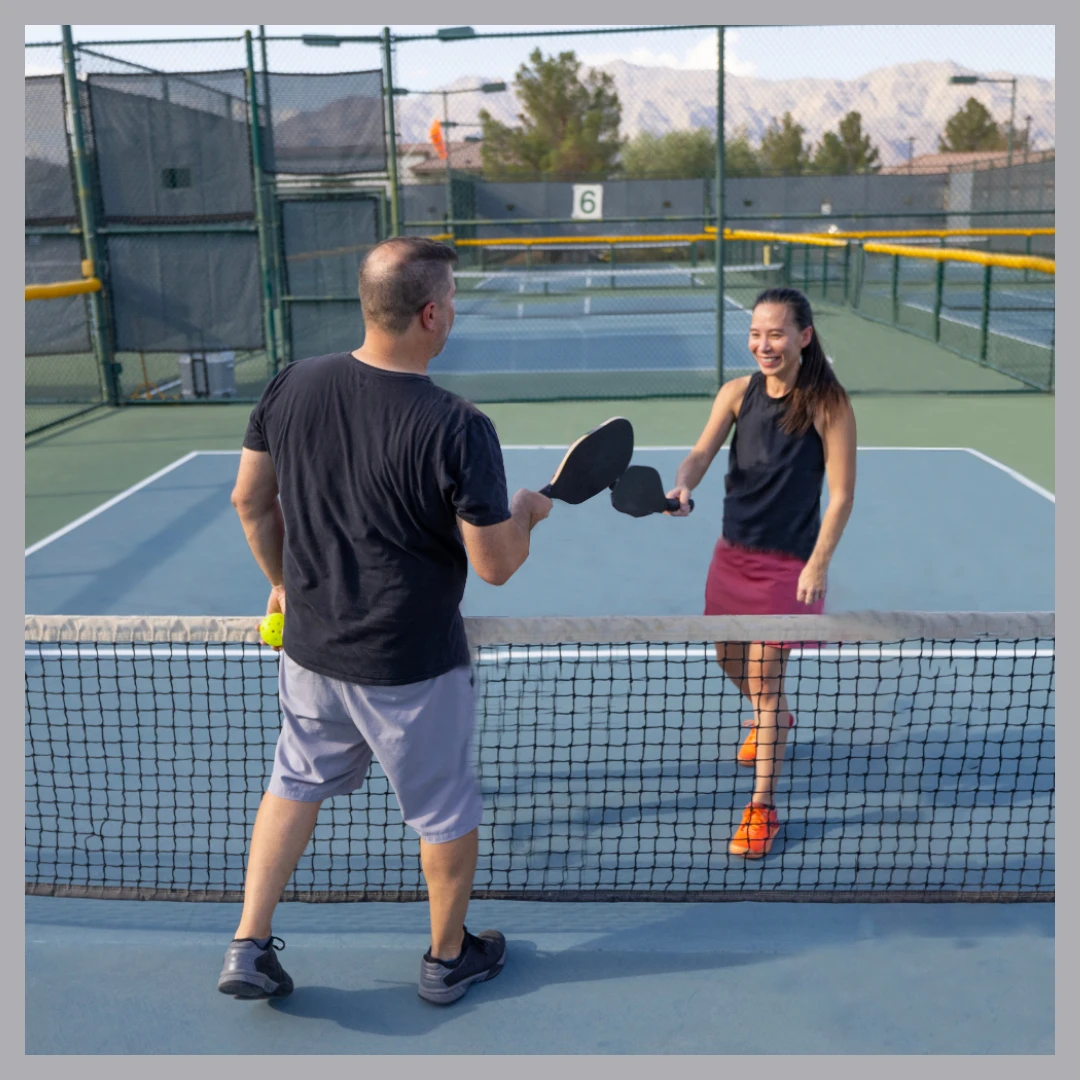 Respect Your Opponents: Always treat your opponents respectfully, regardless of the game’s intensity. Moreover, a friendly smile and a handshake after the match go a long way in promoting a positive atmosphere.
Respect Your Opponents: Always treat your opponents respectfully, regardless of the game’s intensity. Moreover, a friendly smile and a handshake after the match go a long way in promoting a positive atmosphere.
Avoid Distractions: Avoid distractions like loud talking or sudden movements during play while on the court. Concentration is critical for a fair and exciting game.
Cheer for Great Shots: Celebrate not only your own fantastic shots but also those made by your opponents. Acknowledge a great shot; it shows appreciation for the game’s skill, promotes camaraderie and strengthens the sense of mutual respect. In the same way, a friendly atmosphere contributes significantly to the overall experience and leaves a positive impression among players.
 Each shot in Pickleball singles matches entails tactical consequences. Knowing when to adopt an aggressive approach, when to hold a defensive position, adjust your pace, and how to leverage your opponent’s weaknesses can control the rhythm of the game in your favor. Similarly, anticipating your opponent’s actions and preparing responses ahead of time can offer a substantial advantage.
Each shot in Pickleball singles matches entails tactical consequences. Knowing when to adopt an aggressive approach, when to hold a defensive position, adjust your pace, and how to leverage your opponent’s weaknesses can control the rhythm of the game in your favor. Similarly, anticipating your opponent’s actions and preparing responses ahead of time can offer a substantial advantage.
Concurrently, these actions build the game plan for Pickleball singles, where quick thinking and strategies combine to win a game.
 Altogether, as you start your journey in Pickleball singles, remember that the court is more than just a battlefield– it’s a space to strategize creatively. As I have noted in my introduction, Arthur Ashe’s words remind us that in every match, every point marks a milestone in your journey toward improvement and growth.
Altogether, as you start your journey in Pickleball singles, remember that the court is more than just a battlefield– it’s a space to strategize creatively. As I have noted in my introduction, Arthur Ashe’s words remind us that in every match, every point marks a milestone in your journey toward improvement and growth.
Therefore, whether you’re striving for victory in competition or searching for leisure; Pickleball singles offers a fulfilling activity that will keep you coming back for more. Stay tuned for the next installment, where we dive deeper into other topics of this fantastic sport! Happy Pickleballing!

From Beginner to Pro: Ace your Play with our Pickleball Techniques & Strategies to Dominate the Court in your Next Game.

Step into the spotlight, make a lasting impression, and become a trendsetter on the Pickleball court with our Pickleball apparel guide.

Thinking about the perfect gift for someone just starting in Pickleball? Discover our Pickleball gift guide tailored for beginners. Look no further.

Ever wondered how your Pickleball style could reach new heights? Learn the secrets of success with the “Pickleball Accessories To Enhance Your Play and Ace Your Style”.
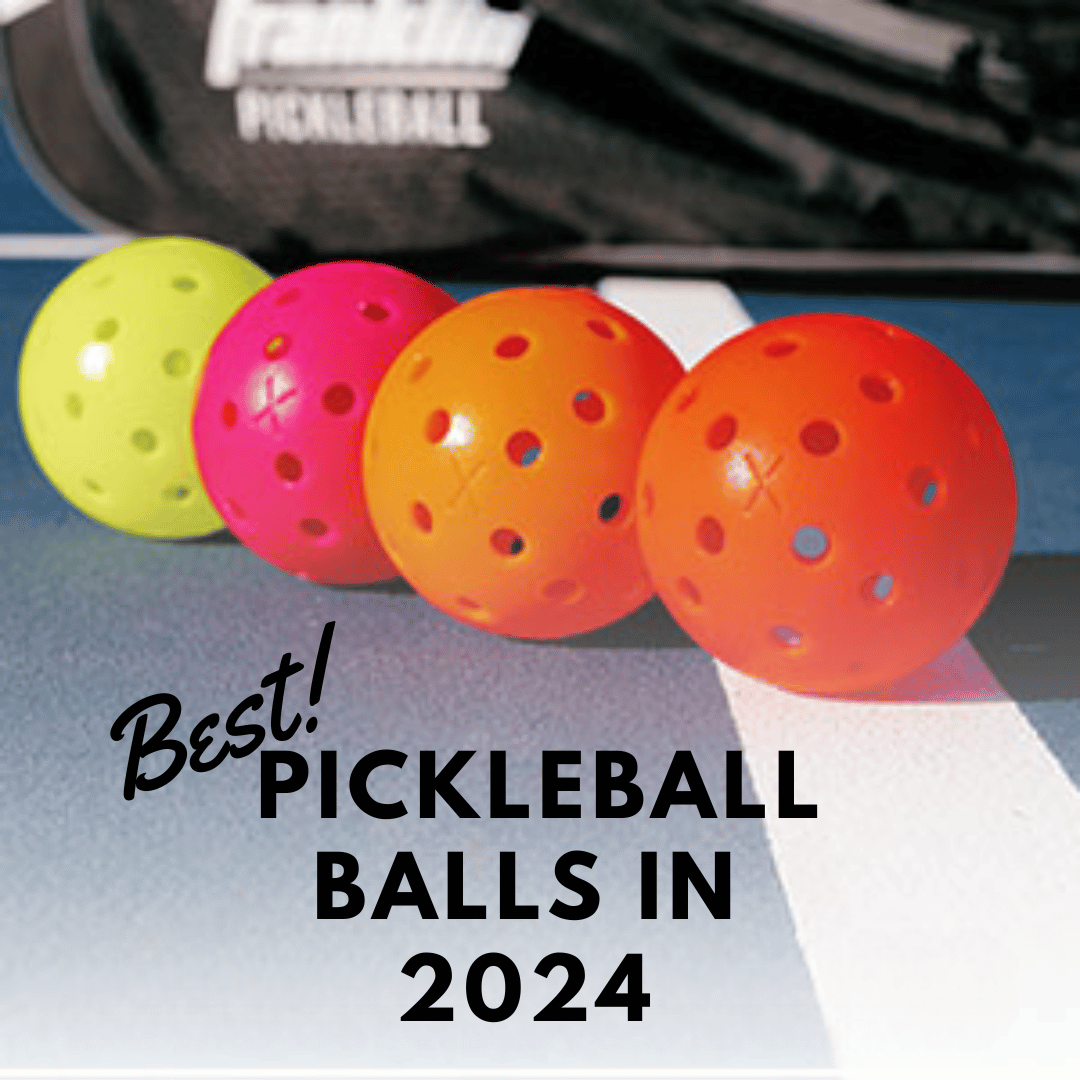
Are you seeking the perfect Pickleball balls for 2024? Let’s find out why they’re the “Best Pickleball balls for 2024”.
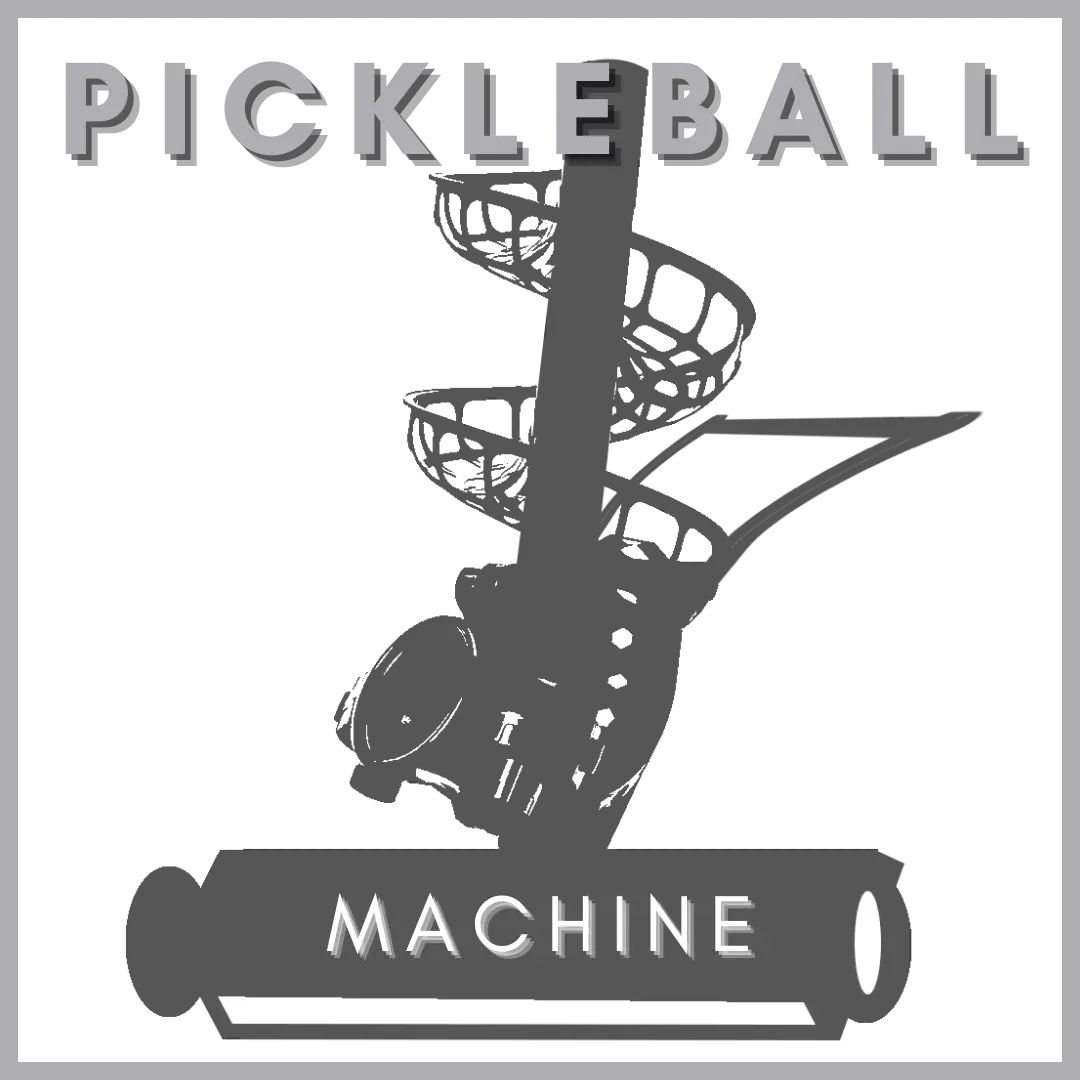
Looking to boost your pickleball skills? How can Pickleball Machines serve as your secret weapon?
If you would like us to feature your brand in our upcoming Pickleball blogs, Collaborate with Us. We’d love to have you featured.